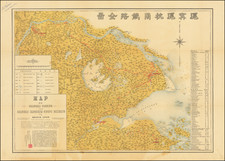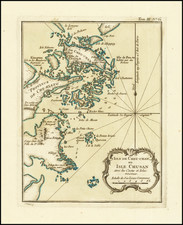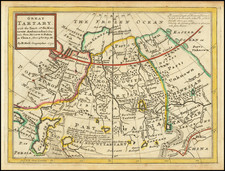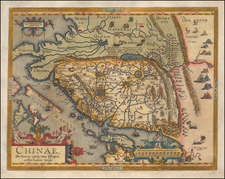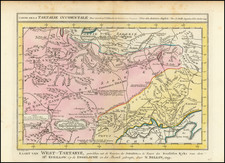Hong Kong Harbor at the outset of World War II
Scarce chart of Hong Kong Harbor, originally issued in 1916 and periodically updated through 1939.
The chart is exceptionally detailed focusing on the immediate waterfront area of Victoria Harbor and the contiguous British Kowloon Peninsula.
The detail within the chart is quite extraodinary, locating:
- Royal Naval Yards
- Chinese Chamber of Commerce
- Berlin Mission
- Piers
- Wharfs
- Railways
- Warehouses
- Factories
- Barracks
- Convents
- Tennis courts
- Hotels
- Clock tower
- Hospitals
- U.S. Recreation Club
- Gun Club
- Quarries
- Cement Works
- Docks
- Ship Yards
- Theaters
- Lunatic Asylum
- Gardens
- Queens College
- Belilios School
- Mosque
- St. Joseph's College
- Crickett Ground
- Waterfront Reclamation Projects
Rarity
The chart is apparently quite rare. We locate no examples of the Pasco Hong Kong Harbour chart at auction. OCLC locates 1 later example, but updated to 1947 (British National Maritime Museum).
The British Admiralty has produced nautical charts since 1795 under the auspices of the United Kingdom Hydrographic Office (HO). Its main task was to provide the Royal Navy with navigational products and service, but since 1821 it has also sold charts to the public.
In 1795, King George III appointed Alexander Dalrymple, a pedantic geographer, to consolidate, catalogue, and improve the Royal Navy’s charts. He produced the first chart as the Hydrographer to the Admiralty in 1802. Dalrymple, known for his sticky personality, served until his death in 1808, when he was succeeded by Captain Thomas Hurd. The HO has been run by naval officers ever since.
Hurd professionalized the office and increased its efficiency. He was succeeded by the Arctic explorer Captain William Parry in 1823. By 1825, the HO was offering over seven hundred charts and views for sale. Under Parry, the HO also began to participate in exploratory expeditions. The first was a joint French-Spanish-British trip to the South Atlantic, a voyage organized in part by the Royal Society of London.
In 1829, Rear-Admiral Sir Francis Beaufort was appointed Hydrographer Royal. Under his management, the HO introduced the wind force scale named for him, as well as began issuing official tide tables (1833). It was under Beaufort that HMS Beagle completed several surveying missions, including its most famous voyage commanded by Captain FitzRoy with Charles Darwin onboard. When Beaufort retired in 1855, the HO had nearly two thousand charts in its catalog.
Later in the nineteenth century, the HO supported the Challenger expedition, which is credited with helping to found the discipline of oceanography. The HO participated in the International Meridian Conference which decided on the Greenwich Meridian as the Prime Meridian. Regulation and standardization of oceanic and navigational measures continued into the twentieth century, with the HO participating at the first International Hydrographic Organization meeting in 1921.
During World War II, the HO chart making facility moved to Taunton, the first purpose-built building it ever inhabited. In 1953, the first purpose-built survey ship went to sea, the HMS Vidal. Today, there is an entire class of survey vessels that make up the Royal Navy’s Hydrographic Squadron. The HO began to computerize their charts in the late 1960s and early 1970s. In 1968, the compilation staff also came to Taunton, and the HO continues to work from there today.









![[Shanghai, Hangzhou, Suzhou, Nanjing] Province De Kiang-Nan](https://storage.googleapis.com/raremaps/img/small/68934.jpg)
